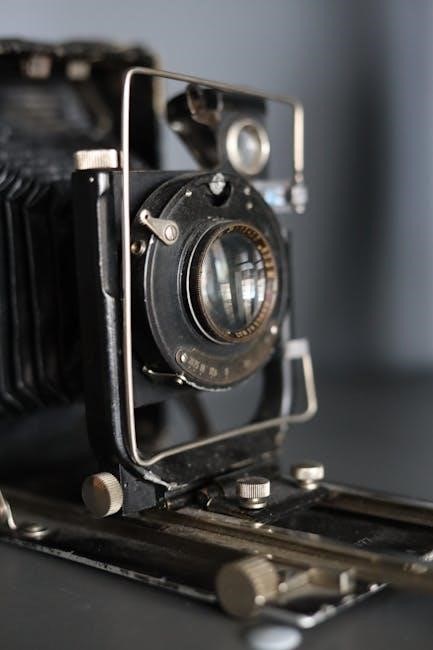pandigital photo frame instructions manual
- Published
- in Instructions
Welcome to the Pandigital Photo Frame, a multimedia device designed to display your digital photos directly from memory cards. No computer needed—simply insert the card, and enjoy your photos in a slideshow format. Perfect for sharing memories with family and friends, this frame offers an easy and convenient way to view your cherished moments. Its user-friendly design makes it accessible to everyone, ensuring a seamless experience for all users.
1.1. Overview of the Pandigital Photo Frame
The Pandigital Photo Frame is a user-friendly multimedia device designed to display digital photos directly from memory cards. It supports various memory card formats and features a sleek, portable design. The frame allows users to enjoy photos in a slideshow format without needing a computer. With a remote control for easy navigation and a high-quality display, it offers a convenient way to organize and view cherished memories. Its intuitive interface ensures a seamless experience for all users, making it an ideal choice for sharing photos with family and friends.
1.2. Key Features of the Device
The Pandigital Photo Frame features multiple memory card slots, supporting popular formats like SD, SDHC, and MMC. It includes a remote control for easy navigation and offers a high-quality display for vibrant photo viewing. The device supports slideshow functionality with adjustable timing and transition effects. Its user-friendly interface ensures simplicity, while the built-in memory allows for efficient photo organization. Designed for convenience, it’s an ideal solution for displaying cherished memories effortlessly.
Unboxing and Initial Setup
Unbox the Pandigital Photo Frame, ensuring all components are included. Carefully remove the frame from the packaging and prepare for initial setup by inserting a memory card.
2.1. What’s Included in the Box
The Pandigital Photo Frame box includes the frame itself, a power cord, and a remote control for easy navigation. Additionally, some models may come with a memory card for storing photos. A user manual is also provided to guide you through setup and operation. Ensure all items are present before proceeding to ensure a smooth experience.
2.2. Connecting the Power Cord
Locate the power cord included in the box and plug it into the frame’s power port, typically found on the back or bottom. Insert the other end into a standard electrical outlet. Ensure the connection is secure to avoid any power issues. Once connected, the frame may automatically turn on or show an LED indicator. For safety, avoid overloading the outlet and keep the cord away from heat sources. If unsure, refer to the user manual for guidance.
Understanding the Frame’s Components
The Pandigital Photo Frame features memory card slots for inserting cards, a power button for turning it on/off, and a remote control for navigating menus and settings.
3.1. Identifying the Memory Card Slots
The memory card slots are located on the side or rear of the Pandigital Photo Frame. They support formats like SD, SDHC, and MMC. To identify them, look for small rectangular openings labeled with memory card icons. Insert your card into the slot with the gold contacts facing inward. The frame will automatically detect and read the card, allowing you to view your photos effortlessly.
3.2. Locating the Power Button and Controls
The power button is typically found on the top or rear of the Pandigital Photo Frame. It is usually marked with a circle or line symbol. Additional controls, such as navigation buttons and settings, may be located on the frame’s side or included on a remote control. These buttons allow you to adjust settings, navigate through photos, and control slideshow features. Refer to the frame’s layout to familiarize yourself with their positions and functions.

Inserting a Memory Card
Ensure the frame is turned off. Locate the memory card slot on the side or rear of the device. Gently insert the card into the slot, ensuring it clicks into place. Make sure the card is compatible with the frame’s supported formats; Once inserted, turn on the frame to access your photos.
4.1. Supported Memory Card Formats
The Pandigital Photo Frame supports various memory card formats, including SD, SDHC, MMC, and MS cards. Ensure compatibility by using cards with capacities up to 32GB for optimal performance. The frame may also support other formats like MiniSD or MicroSD with adapters. Always check the device’s specifications or user manual for a complete list of compatible formats to ensure smooth operation and proper photo display.
4.2. Steps to Insert the Memory Card
- Ensure the frame is powered off before inserting the memory card to avoid any potential damage or data loss.
- Locate the memory card slot on the frame, typically found on the side or rear panel.
- Gently insert the memory card into the slot, ensuring it is properly aligned and seated.
- Turn on the frame and use the remote control to navigate and select the photos from the inserted card.
This process ensures safe and proper insertion, allowing you to enjoy your photos seamlessly.

Turning On the Photo Frame
To power on the Pandigital Photo Frame, locate the power button and press it firmly. The frame will boot up and initialize its system. For first-time use, the setup wizard will guide you through initial configurations. This process ensures a smooth start to using your device.
5.1. First-Time Power-On Process
Upon powering on the Pandigital Photo Frame for the first time, the device will initiate a brief boot-up sequence. The screen will display a welcome message, followed by the setup wizard, which will guide you through language selection, date/time settings, and optional wireless network configuration. This initial process ensures that your frame is properly configured for optimal performance and personalized use right from the start. Once complete, your frame is ready to display your photos seamlessly.
5.2. Initial Setup Wizard
The Initial Setup Wizard guides you through configuring your Pandigital Photo Frame. After the first power-on, the wizard will prompt you to select your preferred language, set the date and time, and optionally connect to a wireless network if available. Follow the on-screen instructions carefully to complete these steps. Once finished, your frame will be fully configured and ready for use, ensuring a smooth and personalized experience right from the start.

Navigating the Menu
The Pandigital Photo Frame features an intuitive menu system, easily navigated using the remote control or built-in buttons. Access settings, view photos, and customize options effortlessly.
6.1. Using the Remote Control
The remote control provides a convenient way to navigate the Pandigital Photo Frame’s menu and control playback. It features intuitive buttons for zoom, rotate, and slideshow settings. Use the directional pad to scroll through options, and press OK to select. The remote also allows you to play/pause slideshows, adjust timers, and access additional features. Ensure the remote is aimed directly at the frame for optimal responsiveness. Batteries are typically included, but check if replacements are needed.
6.2. Accessing Settings and Options
To access settings, press the Menu button on the remote or frame. Navigate through options like slideshow timing, transition effects, and brightness using the directional pad. Select desired settings with the OK button. Customize display preferences, such as turning off the date/time display or adjusting zoom levels. Save changes by selecting the Save option and confirm. The frame will return to the slideshow, ensuring your preferences are applied immediately for an optimized viewing experience.

Viewing Your Photos
Insert the memory card, turn on the frame, and enjoy an automatic slideshow of your photos. The frame supports various formats for seamless viewing.
7.1. Starting a Slideshow
To start a slideshow, insert the memory card into the frame and turn it on. The frame automatically begins displaying your photos in a slideshow format. Use the remote control to adjust settings like transition effects and timing. You can also manually navigate through images using the control buttons. This feature allows you to enjoy your memories effortlessly, creating a seamless viewing experience for you and your family.
7.2. Adjusting Slideshow Timing
Adjust the slideshow timing using the remote control or control buttons. Navigate to the menu, select “Slideshow Settings,” and choose your preferred display duration. Options range from 3 to 60 seconds per image. Save your selection to apply the changes. The frame will remember your settings for future use. This feature allows you to customize the viewing experience, ensuring your photos are displayed at a pace that suits your preference. Default settings can be restored if desired.
Adding Photos to the Frame
Adjust the slideshow timing via the menu using the remote or frame buttons. Select “Slideshow Settings” to choose display duration (3-60 seconds). Save changes to apply. Default settings can be restored if desired. This feature allows customization, ensuring photos display at your preferred pace. Use the remote for quick adjustments or frame controls for direct access. The frame will remember your settings for future slideshows, enhancing your viewing experience with personalized timing.
8.1. Transferring Photos from a Computer
To transfer photos from your computer, connect the frame to your PC using a USB cable. Ensure the frame is in USB mode. Copy your photos to the memory card or internal storage. No additional software is required. Use your computer’s file explorer to drag and drop files. Organize photos into folders for easy access. Safely eject the USB connection before disconnecting. This method allows quick and efficient photo transfers, keeping your memories ready to display.
8.2. Adding Photos via USB
Insert the USB drive into the frame’s USB port. Navigate to the USB option in the menu and select it as the photo source. Copy photos from the USB to the memory card or internal storage. Ensure photos are in compatible formats. Organize photos into folders for easy viewing. Once done, safely remove the USB drive. This method offers a convenient way to expand your photo collection and enjoy new memories on your frame.

Organizing Photos
Organize photos into folders on the memory card for easy access. Create albums or categorize photos by events or dates for a personalized viewing experience.
9.1. Creating Albums
Creating albums on the Pandigital Photo Frame allows you to organize your photos into folders for easy access. To create an album, simply make a folder on your memory card, name it, and add your desired photos. Once inserted into the frame, navigate to the album through the menu. This feature helps you manage and enjoy your photos more efficiently, ensuring a personalized viewing experience tailored to your preferences.
9.2; Managing Photo Order
Managing the photo order on the Pandigital Photo Frame ensures your images display in your preferred sequence. Rename your photo files with numerical prefixes (e.g., 001, 002) to control the order. The frame will automatically sort and display them based on the file names. For further customization, use the menu to adjust slideshow settings or manually select photos to create a personalized viewing experience tailored to your preferences.

Customizing the Display
Customize the display by adjusting brightness, contrast, and transition effects. Use the menu or remote to personalize settings, ensuring your photos look their best always.
10.1. Adjusting Brightness and Contrast
To enhance image quality, navigate to the display settings using the remote or frame controls. Adjust the brightness to optimize visibility in different lighting conditions. Modify the contrast to balance dark and light areas, ensuring vibrant and clear visuals. These settings can be fine-tuned to match your preferences, providing the best possible display for your photos. Save changes to apply the new settings immediately.
10.2. Setting Up Transition Effects
Enhance your slideshow experience by selecting transition effects. Navigate to the Settings menu and choose “Display” or “Slideshow Settings.” Select from options like fade, slide, or dissolve to create smooth transitions between photos. Preview the effects to ensure they match your desired style. Save your preferences to apply the transitions immediately, making your photo display more dynamic and visually appealing.

Troubleshooting Common Issues
- Memory card not detected: Ensure the card is properly inserted and compatible with the frame.
- Photos not displaying: Check file formats and ensure the card is not corrupted.
- Frame not turning on: Verify the power cord is connected and the power button is functioning.
11.1. Memory Card Not Detected
If your Pandigital Photo Frame fails to detect a memory card, ensure it is fully inserted and compatible. Turn the frame off, remove the card, then reinsert it firmly. Check for dust or damage on the card and slots. Use a soft cloth to clean the contacts. If issues persist, try a different memory card to rule out a faulty one. Restart the frame and verify the card is formatted correctly for photo display.
11.2. Photos Not Displaying Properly
If photos aren’t displaying correctly, ensure they are in a supported format like JPEG. Check file names for invalid characters and ensure the memory card isn’t full. Reset the frame by turning it off, waiting a few seconds, then turning it back on. Adjust display settings like brightness and contrast for clarity. If issues continue, format the memory card in the frame or try transferring photos using a USB connection for better compatibility.

Maintenance and Care
Regularly clean the screen with a soft cloth to avoid dust buildup. Avoid using harsh chemicals, as they may damage the display. Update firmware periodically for optimal performance and ensure electrical components are handled with care to prevent damage.
12.1. Cleaning the Screen
To clean the Pandigital Photo Frame’s screen, gently wipe it with a soft, dry cloth to remove dust and fingerprints. Avoid using harsh chemicals, abrasive materials, or excessive moisture, as these can damage the display. For stubborn marks, lightly dampen the cloth with distilled water, but ensure it is thoroughly wrung out to prevent moisture from seeping into the frame. Regular cleaning maintains clarity and preserves the longevity of your device.
12.2. Updating Firmware
To ensure optimal performance, periodically update the Pandigital Photo Frame’s firmware. Check for updates via the frame’s Wi-Fi connection or download the latest version from the official website using a computer. Transfer the update to a memory card, insert it into the frame, and follow on-screen instructions to install. Avoid turning off the device during the update to prevent potential damage. Regular firmware updates enhance functionality and resolve any existing issues. Visit the manufacturer’s website for detailed instructions and the latest software versions.

Frequently Asked Questions
Common inquiries include resetting the frame, using multiple memory cards, and troubleshooting display issues. Check the manual for detailed solutions to these and other questions.
13.1. How Do I Reset the Frame?
To reset the Pandigital Photo Frame, insert a memory card with a file named “reset.txt” (no content needed). Power on the frame, and it will restore default settings. This process resolves freezes or software issues. Ensure the memory card is properly formatted and recognized by the frame before proceeding. The reset will not delete your photos, but it will revert all settings to factory defaults.
13.2. Can I Use Multiple Memory Cards?
The Pandigital Photo Frame supports multiple memory cards, allowing you to switch between different sets of photos. Simply insert one memory card at a time into the designated slot. The frame will automatically detect and display the photos stored on the card. While you can only use one memory card at a time, you can easily swap cards to view different albums or collections. Ensure the memory cards are compatible with the frame’s supported formats for optimal performance.
Safety Precautions
Avoid exposing the frame to liquids or extreme temperatures. Use only the provided power cord and avoid touching electrical components with wet hands. Handle the screen with care to prevent scratches or damage. Keep the device out of reach of children and ensure proper ventilation to prevent overheating. Follow all safety guidelines to maintain optimal performance and longevity of the Pandigital Photo Frame.
14.1. Avoiding Damage to the Screen
To protect the screen, avoid touching it with sharp objects or abrasive materials. Clean only with a soft, dry cloth. Never apply liquid directly to the screen; dampen the cloth slightly if necessary. Avoid exposure to direct sunlight or extreme temperatures. Handle with care to prevent scratches or cracks. Regularly inspect for dust and clean gently to maintain clarity and prevent damage. Proper care ensures a vibrant display for years to come.
14.2. Proper Handling of Electrical Components
Handle electrical components with care to ensure safety and longevity. Avoid exposing the frame or cords to liquid, as this can cause short circuits. Never touch electrical parts with wet hands. Use only the provided power cord and avoid overloading outlets. Unplug the frame by gripping the plug, not the cord. Store cords neatly to prevent tangling and damage. Follow these guidelines to maintain your frame’s electrical integrity and ensure reliable performance over time.
Warranty and Support
The Pandigital Photo Frame is backed by a one-year limited warranty covering manufacturing defects. For inquiries or claims, contact customer support via phone or email.
15.1. Understanding the Warranty Period
The Pandigital Photo Frame is covered by a one-year limited warranty, starting from the purchase date. This warranty covers manufacturing defects and ensures repairs or replacements for faulty parts. For details, refer to the user manual or contact customer support. Proper use and care are essential to maintain warranty validity.
15.2. Contacting Customer Support
For assistance with your Pandigital Photo Frame, contact customer support via phone at 1-800-555-2368, Monday through Friday, 9 AM to 5 PM EST. You can also email support@pandigital.com or visit the official website at www.pandigital.com/support for troubleshooting guides and FAQs. Ensure to have your product serial number ready for faster service. Representatives are available to address any issues or concerns regarding your device.
Congratulations! Your Pandigital Photo Frame is now fully set up. Enjoy viewing your cherished memories. For any queries, refer to the support information provided.
16.1. Final Tips for Optimal Use
Organize your photos into albums for easy access. Regularly clean the screen with a soft cloth to maintain clarity. Adjust slideshow timing for optimal viewing. Ensure the frame is placed in a stable, dry environment. Avoid exposing it to direct sunlight to prevent overheating. Use the remote control efficiently to navigate through settings. Update firmware periodically to enhance performance. Handle electrical components with care to prolong the device’s lifespan.
16.2. Enjoying Your Pandigital Photo Frame
Welcome to a world of cherished memories with your Pandigital Photo Frame. Effortlessly display your favorite photos in vibrant detail, creating a beautiful slideshow that brings joy to any room. Share moments with family and friends, and enjoy the convenience of a user-friendly interface. Let your frame become a central part of your home decor, celebrating life’s special moments with elegance and simplicity. Experience the perfect blend of functionality and style.
